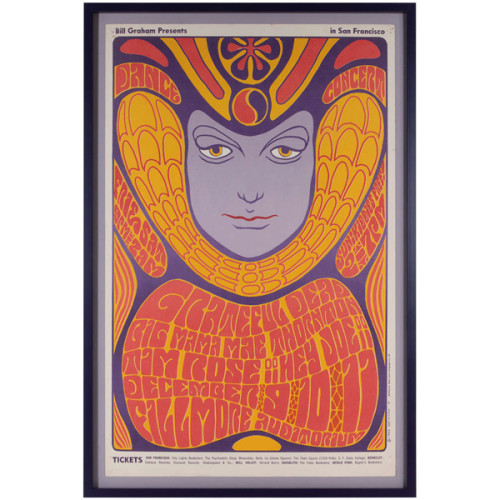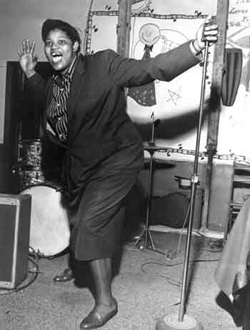Product Description
Wes Wilson, Grateful Dead, Big Mama Mae Thornton at the Fillmore, December 9-11, 1966, 1st edition



WES WILSON USA
Grateful Dead, Big Mama Mae Thornton at the Fillmore December 9-11, 1966
Marked: © 1966 Wes Wilson 41, printing by West Coast Lithograph Co. SF
H: 21 7/8” x W: 14”
Wes Wilson, Grateful Dead, Big Mama Mae Thornton at the Fillmore, December 9-11, 1966, 1st edition
ALEXANDER LIBERMAN (1912-1999) USA
MEYER SCHAPIRO PORTFOLIO 1974
Untitled 1973
Silkscreen, patinated bronze frame
Signed: A. Liberman 1973, Artist’s proof, 2RC (embossed on paper)
Canvas: H: 33” x W: 25 1/2”
Frame: H: 42 1/2” x W 33 1/2”
Portfolio of 12 works, Edition of 100
Price: $
Alexander Liberman’s family left the Soviet Union for London as exiles in 1921. Liberman studied there briefly before moving to Paris where he undertook philosophy and mathematics at the Sorbonne and architecture at the École des Beaux-Arts. In the 1930s Liberman designed stage sets, and worked on the staff of Vu, the first magazine illustrated with photographs. Although Liberman quickly earned the title of managing director, he left the magazine in 1936, and devoted himself to painting and writing. In 1941, he left Paris for New York. Again, he became involved in publishing after gaining employment at Vogue magazine. Twenty years later, in 1962, he became Editorial Director of all Condé Nast Publications, a position he held until he retired in 1994. During his time at Vogue, Liberman introduced 20th-century art to readers by using it as a backdrop for fashion shoots, as well as by profiling living artists in the magazine. As a painter, Liberman exhibited geometric circle paintings in galleries and museums around New York in the 1950s. Liberman also had an interest in sculpture, and began welding steel into public works in the late 1950s. These monochrome geometric sculptures are featured in over 40 cities worldwide.
BONNIE MACLEAN USA
Eric Burdon & The Animals, Mother Earth, Hour Glass, Holy See at the Fillmore October 19-21, 1967
Marked: B. MacLean © Bill Graham 1967 #89
H: 21” x W: 14”
*** An example of this poster is in the permanent collection of the Museum of Modern Art in New York.
By 1967, Eric Burdon took the Animals into a harder, more psychedelic sound than the one listeners recognized from the band’s earlier incarnation. Burdon would later take this style even further when he teamed up with an obscure Los Angeles band known as War. The poster was printed only once before the concert
